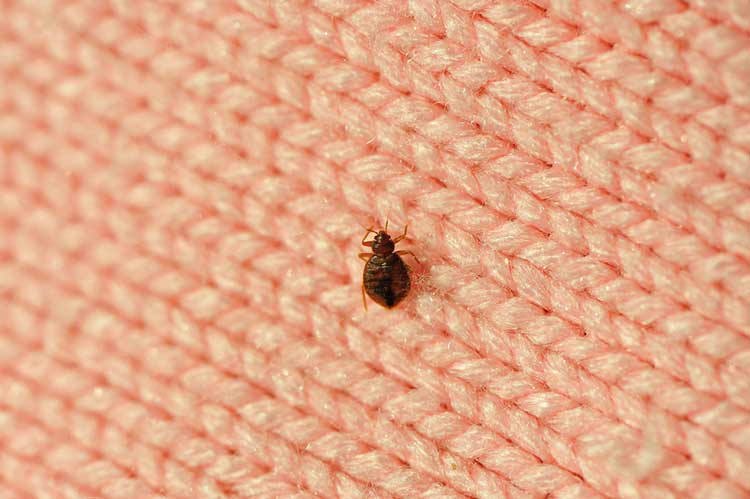How to Get Rid of Bedbugs
Last updated November 2024

Bedbugs are wingless, flat, reddish-brown, oval, and about the size of an apple seed. They are nocturnal and feed on the blood of warm-blooded hosts. In homes, they tend to live near beds: in mattress seams, sheets, and furniture; behind loose wallpaper, electrical wall plates, and baseboards; underneath carpet and rugs; in picture frames; and in wall and ceiling cracks.
Tiny flat bedbugs are difficult to detect early on and therefore often bring major infestations—you’ll usually discover them only after they’ve chewed on you a bit. Bedbug bites usually aren’t painful, but they often result in itchy red welts the day after.
Other bedbug red flags: small bloodstains on bedding (as sleeping victims roll over and squash them) and clusters of small dark-brown or black dots on infested surfaces (dried bedbug poo).
Bedbugs don’t spread disease, though their bites can get infected.
How to Stop Them
Resilient and often pesticide-resistant, bedbugs are notoriously difficult to control. They typically feed every five to 10 days but can survive a year without food. They are excellent hitchhikers and multiply quickly—a single critter or egg sac transported from an infested site on an item of clothing or in a suitcase can produce a new population. Because they don’t live in colonies, when infestations occur the entire area must be treated, possibly several times. Even small infestations may require calling in a pro.
Sanitation won’t prevent bedbugs or get rid of them. But since clutter provides them with perfect hiding spots, the first step toward eliminating an infestation is to clear out everything in the room except the furniture. Put items in airtight plastic bags and seal them before you leave the room; otherwise you’re giving the bedbugs the chance to spread.
Then thoroughly vacuum beds and carpets. Remove electrical outlet and lighting switch plates, and vacuum the dust and debris inside (after you’ve shut off the circuit breaker!). Pull carpeting off its tack strips around the perimeter of the room (one side at a time), so you can thoroughly vacuum baseboards and underneath the edges of the carpeting. Immediately dispose of the vacuum bag outdoors afterwards.
Wash everything that’s washable in the hottest water it can take (120°F or higher), and dry at the hottest setting possible. Have carpets and rugs professionally cleaned.
Then take on any remaining bugs. Pest control services use a range of pesticides, but since they have to treat surfaces where skin exposure occurs, they most commonly apply pyrethroids and isopropyl alcohol. The alcohol kills bugs on contact and evaporates quickly, leaving minimal residue. The drawback: Without any residue, the agent won’t stick around long enough to kill the bedbugs that survived the previous treatment. But even one treatment should knock a bedbug infestation down to manageable levels; and since its dehydrating effect also affects bedbug eggs, repeated treatments, along with washing and vacuuming, should eventually eliminate them.

Hiring Help
Since bedbug infestations are so challenging and usually require multiple treatments, many people hire pros. Ask any company you consider to carefully describe what it will do and provide a written guarantee that lasts for at least a year—plus a commitment to return and re-treat as many times as necessary to eliminate the infestation. If subsequent visits are to be billed on a per-visit basis, get that in writing, too.


